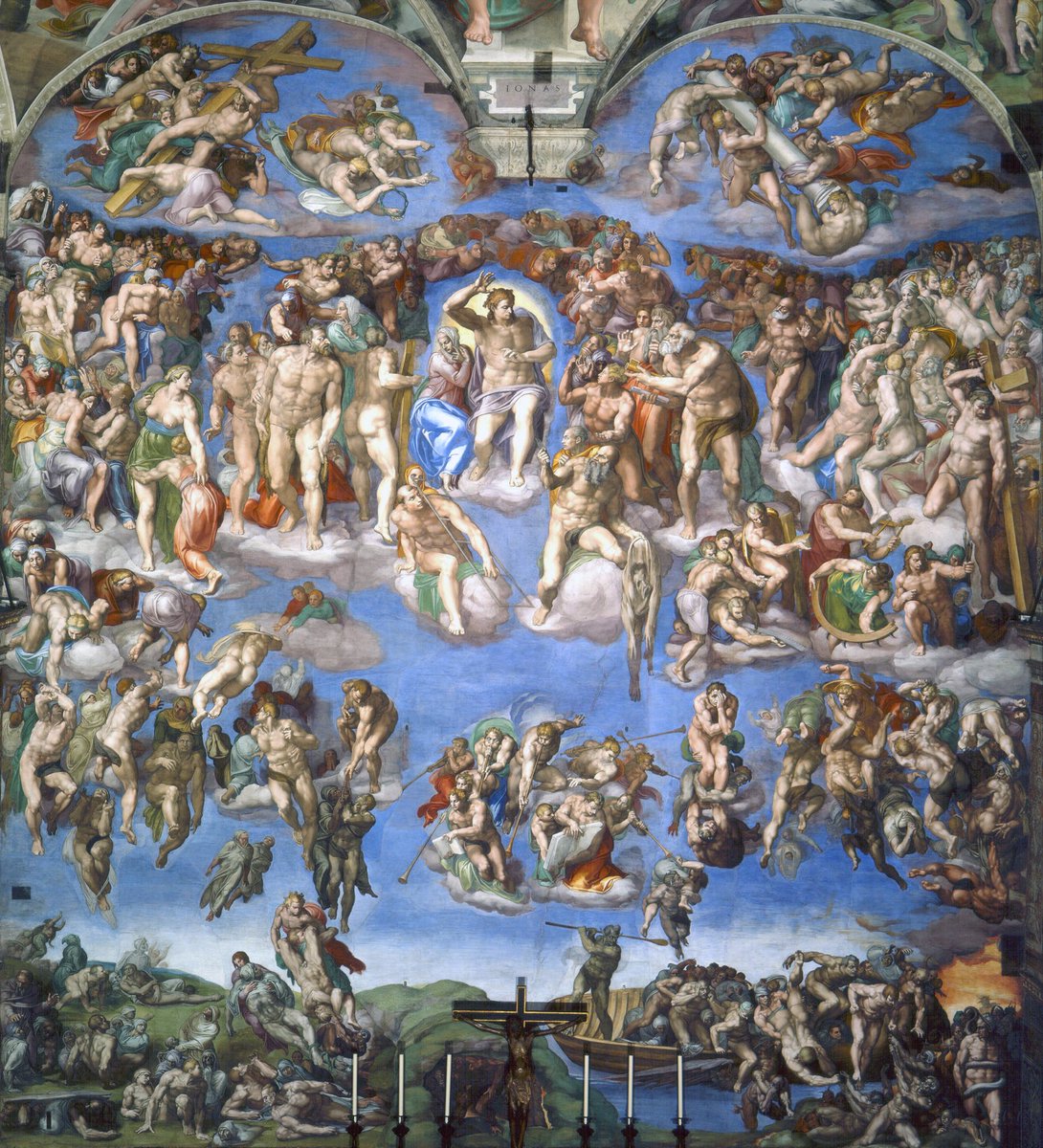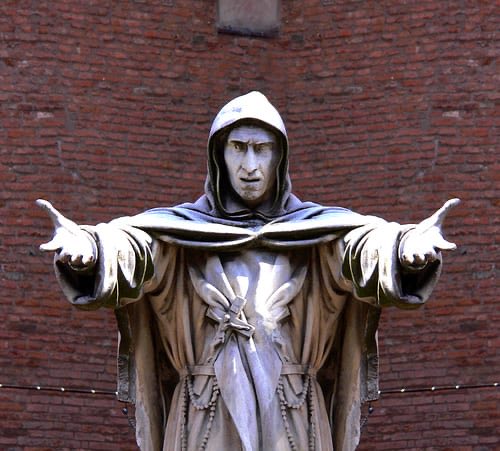As the end of my semester meets the announcement of the new Pope the story of Michelangelo and the Sistine Chapel, it’s very relevant.
In his effort to beautify Rome, prolific art patron Pope Julius II wanted the most skilled and renowned artists.
🧵1/17
thecatholicherald.com/the-staggering…
In his effort to beautify Rome, prolific art patron Pope Julius II wanted the most skilled and renowned artists.
🧵1/17
thecatholicherald.com/the-staggering…
Michelangelo’s statue of David, and other works from Christian history, made him the perfect choice. Rightly, his Pietà is seen as the start of the High Renaissance. The Pope wanted Michelangelo to paint the Sistine, but the artist considered himself a sculptor, not a painter. 

So, Michelangelo set to work to design, sketch, paint the ceiling of the Sistine chapel, the backdrop of the altar, and the interior surrounding the clerestories. To entice, the Pope also gave Michelangelo a rich commission to design His papal tomb.
(Fig.metmuseum.org/art/collection…
(Fig.metmuseum.org/art/collection…
The designing, sketching, painting, took about 5 years, and the work was completed in 1512z
Despite his initial reluctance, Michelangelo's work on the Sistine Chapel ceiling of course became one of the most celebrated masterpieces of Western art.
my own picture below
Despite his initial reluctance, Michelangelo's work on the Sistine Chapel ceiling of course became one of the most celebrated masterpieces of Western art.
my own picture below

Reception to the Sistine was overwhelmingly positive. The intricate details and the grandeur of the scenes from the Book of Genesis left people in awe. The frescoes particularly were praised for their artistic brilliance and theological depth.
It was a masterpiece.
It was a masterpiece.

However, the Last Judgment fresco, behind the altar, sparked controversy w/its depiction of nudity. Some deemed it inappropriate for such a sacred space. After Michelangelo’s death, the Council of Trent ordered the fresco to be “updated” to align w/contemporary Church standards. 

Daniele da Volterra, a pupil of Michelangelo, was commissioned to dress the figures, earning him the nickname "il Braghettone" (the breeches maker). Edits were extensive. He covered figures w/drapery & fig leaves, and even altered some completely, like St. Catherine & St. Blaise. 

The revised works faced mixed reactions. Some supported restoring decorum, while others criticized the desecration of a masterpiece.
The edits reflected the moral standards of the time, where the Church sought to ensure religious imagery aligned with its teachings and values.
The edits reflected the moral standards of the time, where the Church sought to ensure religious imagery aligned with its teachings and values.

This reply to the Renaissance included the "Fig Leaf Campaign," initiated by the Church in the 16th C. Pope Innocent X ordered the alteration of art like Velasquez’s ‘Rokeby Venus’ to adhere to modesty standards, with a nude Venus being given drapery. artrkl.com/blogs/news/the…
Altho obviously unauthorized by Michelangelo, da Volterra's edits were not only about censorship but perhaps also preservation. Without intervention the fresco might have been destroyed due to the Counter-Reformation's strict standards. It wouldn’t have been the first time
Just 15 years before the completion of the Sistine Chapel, Girolamo Savonarola held, on what we know as Fat Tuesday, his Bonfire of the Vanities, at which thousands of objects, including cosmetics, art, books, and other items considered sinful were destroyed. 

Of course, it took about 90 days for Savonarola to be
excommunicated, and by May of 1498 he was tortured and burned alive in the Piazza della Signoria, in front of the Palazzo Vecchio (City Hall) in the same spot where he had conducted his own ritual.
.readtheplaque.com/plaque/the-exa…
excommunicated, and by May of 1498 he was tortured and burned alive in the Piazza della Signoria, in front of the Palazzo Vecchio (City Hall) in the same spot where he had conducted his own ritual.
.readtheplaque.com/plaque/the-exa…
Eventually, the Counter-Reformation led to Baroque art. Leaders like Cardinal Gabrielle Paleotti established guidelines for religious art, insisting that it should be clear and didactic. He even wrote a treatise: “Discourse On Sacred And Profane Images”
shop.getty.edu/products/disco…
shop.getty.edu/products/disco…
Ultimately, masters like Caravaggio and Rubens emerged, making works that were both engaging and visually unambiguous, in adherence to Church directives. 

Coincidentally (?) the Uffizi (“offices”) of the Medici, the ruling class of Florence, is now a world-class renaissance and Baroque museum which hosts an enormous Caravaggio collection, steps from the site of Savonarola’s death in front of City Hall.
uffizi.it/en/events/cara…
uffizi.it/en/events/cara…
Sadly, the tomb of Pope Julius II never did achieve the grandeur Michelangelo had planned, with its dozens of life-sized sculptures, instead ending as a wall mount rather than a stand alone structure, and the master declared it his ultimate failure.
metmuseum.org/art/collection…
metmuseum.org/art/collection…
• • •
Missing some Tweet in this thread? You can try to
force a refresh





